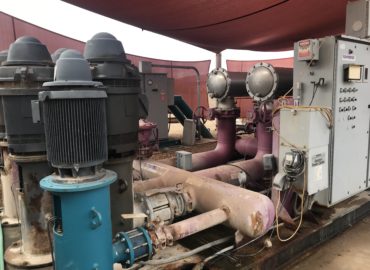When you’re selecting a vertical turbine pump or any other kind of pump, it’s vital to select a pump that will fit well for the job you have in mind. Pumps come in a wide range of sizes and capacities, so there’s a pump for any particular job – you just need to find it.
Manufacturers try to help you do this by producing pump curve charts. These are intended as ‘at a glance’ overviews of the pump’s traits and expected performance. However, the charts themselves contain a lot of information and can be overwhelming at first glance.
Here’s a quick guide for how to read them.
The Basics Of Pump Curve Charts
For starters, let’s look at the two axes on the chart. The horizontal axis represents the flow capacity. That is, how much liquid can be pumped. Then the vertical axis represents head flow, which is the pressure of the fluid within the pump.
The other important thing to know here is that performance of a pump is not linear, which is why it’s always represented as a curve. The amount of power (usually measured in horsepower) being supplied to the pump will affect performance, but with diminishing results, and usually, some key points where performance is optimal. For this reason, pump curves often include several curves, each defined by the horsepower being applied.
So, to read a basic pump curve chart, you:
- Start on the horizontal axis and select the desired flow capacity you need.
- Move upwards and see where that point on the axis intersects with the charted curve.
- If the chart contains several curves, stop at whichever curve represents the amount of power input/horsepower you expect to be using.
- From that point, go to the left to see what the flow head/pressure will be.
- Some curves also include a shaded area, which represents the optimal power/flow/pressure range combination for that pump. This is important for optimizing your energy usage.
And this should give you a good idea of whether the pump you’re looking at will be right for your needs. This does require some knowledge of what will be pumped, of course, which particularly influences how much pressure you’ll need to move the fluid.
Vertical Turbine Pumps & More
Or, if you’re looking for a pump but aren’t sure what’s best for your needs, the experts at FloRight Pump & Controls are here for you.

